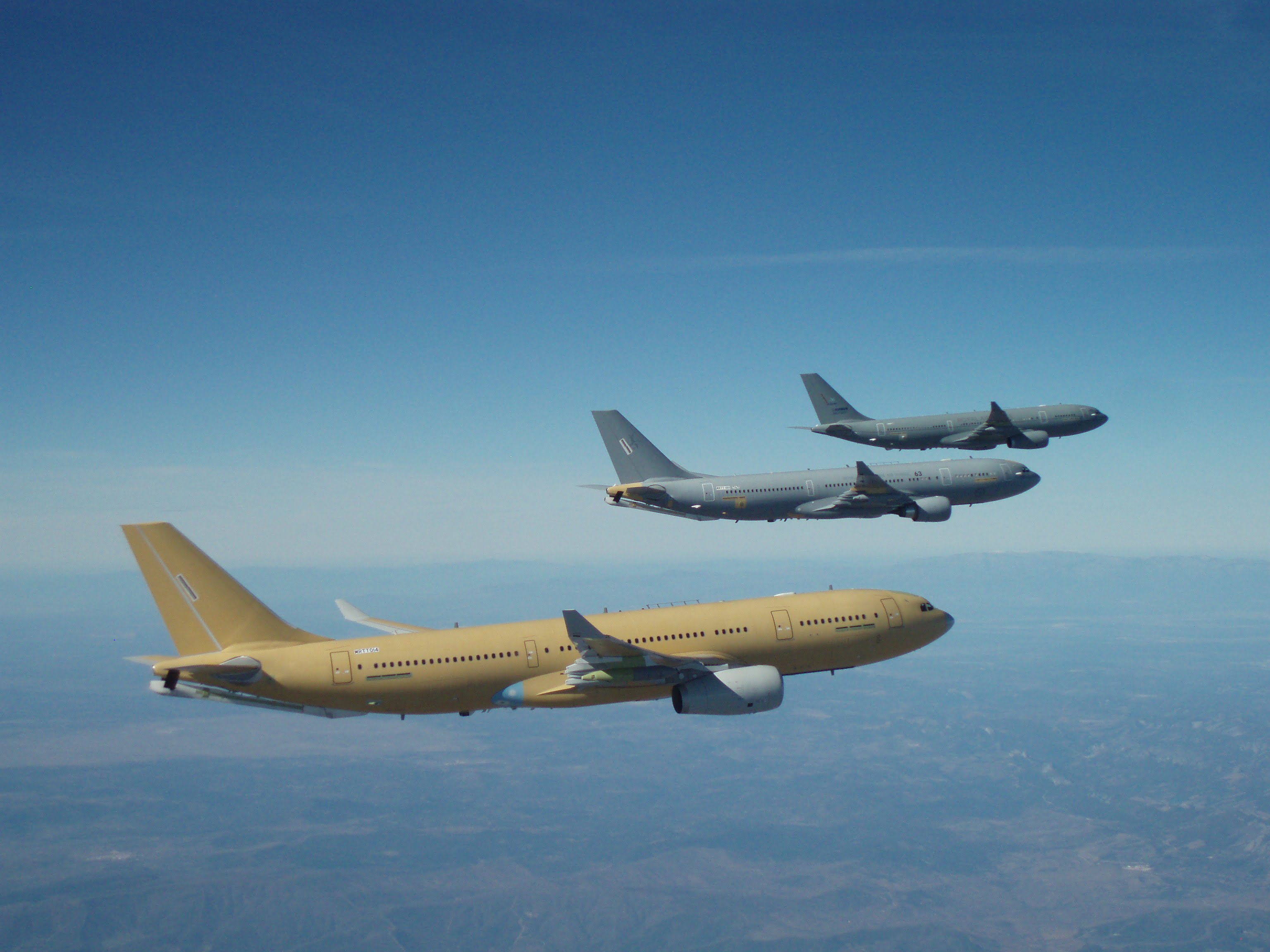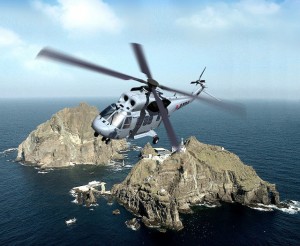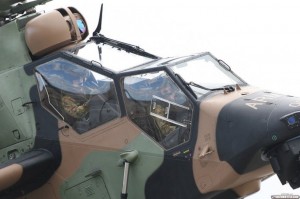2013-08-24 By Robbin Laird
A neglected aspect of the analysis of the evolution of Asian defense and security is the contribution of European defense industry.
Major industrial players in Europe as in the United States are seeking global markets to remain viable and to evolve over time. Defense and security is not a static business; it is highly competitive and modernization is always a key element of the equation. Global customers are a crucial element for a US or European defense firm to remain on the cutting edge and to be viable in challenging economic conditions.
European firms provide capabilities in many areas of interest to Asian customers, notably in military aerospace, weapons and naval systems.
In this piece, I am going address the military aerospace and weapons part of the equation, and provide examples of developments to illustrate the dynamics of change.
The point can be simply put: European firms are providing core capabilities for Asian customers and are part of the equation.
The UK and Japan Agreement
Perhaps governments will follow as well. Notably, the United Kingdom recently signed an agreement with Japan focusing on defense and security issues. On July 4, 2013, the UK announced that they had reached an agreement with Japan on defense and security issues. According to the UK government:
The Foreign Secretary, William Hague, and His Excellency Mr Keiichi Hayashi, Ambassador of Japan to the United Kingdom, today signed 2 agreements which will create a legal framework for closer co-operation between the 2 countries on defence and security.
William Hague said:
Japan is a key ally of the UK and we work closely together on many issues of global foreign and security policy. This is a groundbreaking agreement, which will enable joint research, development and production of defense equipment.
It will facilitate closer relationships between British and Japanese defense industries, support their endeavors to work collaboratively, and contribute to the already close security and defense co-operation between the UK and Japan, aimed at promoting global peace and stability.
The Defence Equipment Cooperation Framework will put in place the legal understanding that will enable joint research, development and production of defense equipment. The UK is the first country in the world to sign such a comprehensive agreement with Japan since the creation of its Guidelines on the Overseas Transfer of Defence Equipment etc.
The Information Security Agreement sets out the standards and arrangements for the security protection of classified information exchanged between the UK and Japan. This is not limited to the defense field, but the agreement will assist the implementation of the Defence Equipment Cooperation Framework.
The first collaboration project is expected to take place in the area of chemical, biological, radiological and nuclear protection. Further projects involving industry are expected to follow, and discussions have already taken place on the potential of working together in other capability areas.
This agreement highlights a reality, which has largely been ignored: European defense industry plays a growing role in Asian defense and security.
And even in the case of a highly visible US program, the F-35, the F-35 enables European weapon makers to enhance their role in the Asian market.
The Dynamics of Change in the Asian Market
Prior to examining some key European systems involved in Asian defense, it is important to underscore some of the dynamics of change in the Asian market with which Europe is involved.
First, the larger Asian customers clearly wish to expand their capabilities to produce their “own” equipment. What this means in a global age is that industrial partnerships between European and Asian firms are a key part of the growing European presence. This means as well that “re-export” of European systems from Asia will be part of the 21st century reality of the global arms market.
Second, there is clear concern with security of supply on the part of Asians, notably with regard to the need to surge to support operations, which might be controversial in other parts of the world. There is concern that conflictual dynamics in Asia might be of concern to the US and Europe who would seek a veto of Asian national actions. To avoid this kind of veto power, diversification of supply is necessary but also avoiding dependence on overseas supply chains with a very limited supply of just in time stockpiles. It is crucial to have supplies in place if conflict comes to provide for operational flexibility by Asian nations. Europe is viewed as a contributor to such flexibility.
Airbus Military and Asia
Within Asia, one can find the most advanced air tankers in the world, the A330MRTT. Australia has 5; the US currently has no new tankers. These tankers are really multi-mission systems, able to tank, to provide airlift and other capabilities due to the fact that the tankers carry fuel in their wings not in the cargo body of the aircraft. This allows the plane’s cargo area to be used for a variety of other purposes.
The Australians see their new tanker as part of their requirement to operate in a wider arc around Australia to protect their interests and to support other allies in the region, including the United States. For the Aussies, the “tyranny of distance” of the Pacific can be better managed by its air assets and those of its coalition partners with their refueable, long distance tanker.
According to Commodore Gary Martin, commander the RAAF’s Air Lift Group:
This aircraft can take six fighters from Australia to the mainland United States happily. Its loiter time and offload is almost TWICE that of a US Air Force KC-10A Extender.
https://sldinfo.com/the-royal-australian-air-force-receives-5th-air-tanker/
India is an additional customer for the new European tanker, and others may well join in the near term. There are currently 5 global customers for the plane, in Europe, the Middle East and Asia.
https://sldinfo.com/shaping-a-global-fleet-rolling-out-the-a330mrtt/
Another new Airbus Military product is entering Asia in the near term. The new A400M airlifter has Malaysia as its first export customer. Malaysia is to receive 4 A400Ms to complement its C-130 fleet in the 2015-2016 time frame.
The type will not replace the Royal Malaysian Air Force’s (RMAF’s) Lockheed Martin C-130 Hercules, but serve to double the RMAF’s airlift capacity, air force commander General Rodzali Daud said in a report by Malaysia national news agency Bernama.
http://www.flightglobal.com/news/articles/malaysia-to-receive-first-a400m-in-january-2015-370760/
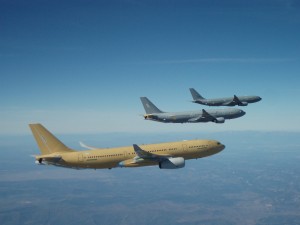
I earlier have interviewed M. Ghazemy Mahmud, the editor of the Malaysian based Asian Defence Journal about his impressions of the A400M and its impact on the Malaysian air lift fleet.
And his comments clearly underscore the solid position European companies have within Asia, in part due to the commercial success of Airbus itself.
Question: How important is it for Malaysia to be on the ground floor for the launch of this new European aircraft program?
Answer: Very important. And both ways, for the European program to operate in Asian conditions and for us to be part of a new global program.
Airbus is certainly not new to us. We are buying the A380 and other planes on the commercial side with Airbus.
Question: What is the impact of the residual C-130 fleet?
Answer: A core reality is that the A400M will be used with our C-235s and C-130s for a long time. In effect, a task force approach will be put in place.
Malaysia has C-130Hs which is relevantly new airlifter and the Air Force is very pleased with this aircraft. It will be upgraded over time, but the C-130J will not be bought because of the availability of the A400M.
Although the Malaysian Air Force likes the C-17, it is too expensive to buy and to operate for them. The A400M is a better choice for them, and will shape a new approach to the use of the overall fleet.
https://sldinfo.com/the-editor-of-asian-defence-journal-talks-about-the-a400m-in-asia/
The A400M is not just a competitive replacement for a US product – it is a genuinely new product and new capability and likely to be of significant interest to Asians in the years ahead. The A400M features C-130-like ability to use a wide variety of airfields with the capability to carry oversized loads of the sort that the C-17 currently carries.
It will not be difficult to see how this aircraft will initially be used.
In the current Mali operation, the French had significant challenges in delivering the capability necessary for their forces. When the A400M many years ago was first thought of, lift was considered somewhat equivalent to a truck or a greyhound bus. With the last decade of experience and the revolution in air dropping, the air lifter is an integral part of the kind of expeditionary logistics, which insertion forces clearly need to operate with for 21st century operations.
https://sldinfo.com/the-a400m-takes-flight-redefining-the-airlift-market/
And the more classic variants of the original CASA line play a role in Asia as well. For example, Vietnam has bought the C-212 to provide for a key element in the maritime security efforts, focused upon perimeter security.
And the partnership between CASA and Indonesia has been redefined and enhanced under Airbus Military. AM will no longer build the C-212, which will now be the responsibility for their Indonesian partner.
The press release of Airbus Military dated 8/11/12 gives one a sense of the evolving partnership relationship with Indonesia:
Airbus Military and PT Dirgantara Indonesia (PT DI) have signed an agreement to jointly launch an upgraded version of the Airbus Military C212-400 as a further step in their long term cooperation agreement. The aircraft, renamed as NC212, will be offered to both civil and military customers and will be a highly competitive offer in the market segment of light aircraft, being equipped with new digital avionics and autopilot systems. It will also have a new civil interior for up to 28 passengers compared to the current 25, increasing its cost efficiency significantly. The NC212 will be EASA and FAA FAR 25 certified.
The agreement foresees joint development, manufacturing, commercialization and customer support to cover the needs of the civilian, cargo and military light aircraft market segments for the next decade. The potential market in this segment is estimated at 400-450 aircraft in the next ten years. A Final Assembly Line is to be set up in the PT DI facilities in Bandung. This is a further step towards increasing the cooperation between the two long-standing partners.
The NC212 is the second immediate result of the “Teaming Agreement” signed between Airbus Military and PT DI, which supports PT DI’s revitalization through specific cooperation and business development projects, and aims to achieve a long term strategic partnership between Airbus Military and PT DI in the near future. The recent order for nine CN295s from the Indonesian Government and the related C295 cooperation packages between Airbus Military and PT DI were the first immediate results of this plan, including the creation of a CN295 Delivery Centre, a light CN295 Final Assembly Line and the setting up of a Service Centre in Bandung.
Eurocopter and Asia
With this kind of approach Airbus Military is likely to see its market share in Asia expand; as will be the case with another key European firm, Eurocopter. Eurocopter has had significant presence in Asia for a long time, and has built up over time its partnerships and presence in the region. What is new is an expanding role in the security and defense market within Asia itself.
In an interview with Norbert Ducrot, Eurocopter Senior Vice President – North Asia, discussed Eurocopter’s evolving role in Asia. He underscored the significant position, which Eurocopter has in South East Asia with their light utility helicopters and their Search and Rescue Helicopters, but he highlighted the importance of the working agreements with South Korea in shaping a new helicopter via production cooperation as a key change.
In 2006, Eurocopter and South Korea signed an agreement to produce the Surion helicopter, which is based on the Puma family of helicopters. The helicopter has produced through an agreement between Korean Aerospace Industries and Eurocopter.
According to Ducrot: “It really is a Korean helicopter. One needs to realize that about 80% of the helicopter has been redesigned by the South Koreans; it is not simply license production for it is a newly designed helicopter. And we have an agreement to export this helicopter with them to selected markets. This is not a problem for us for the helicopter has no equivalent in the Eurocopter line. It is a new build 8.5 ton helicopter.”
He emphasized as well that the South Koreans and Japanese are really at the top of the game globally in terms of production technologies and techniques. Because of this it makes a great deal of sense for Eurocopter to build out its presence in Asia.
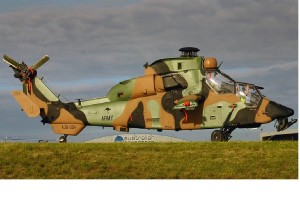
Ducrot also highlighted the importance of support to the acquisition of aircraft in Asian defense.
How important is logistical support, training, and maintenance in shaping your market strategy?
Ducrot: It is a really foundational element. We have several subsidiaries already in Asia, and have more than 2000 people working on support in the region. We have seven flight simulators in Asia as well. We are building out our capacity to support our helicopters in the region and obviously this is a crucial element for success in any defense program.
An Asian country is not going to buy a defense product, which they cannot support fully.
An additional engagement of Eurocopter in Asia, which is yielding a new capability, are the Tiger helicopters in Australia. The Australian Army is in the throes of reform and part of that reform is enhancing its mobility and deployability.
The Eurocopter attack helicopter – the Tiger is part of that experience.
The French have innovated significantly with their Tigers, notably in operating them off of their amphibious ships off of Libya. This experience has been shared with the Aussies and, indeed, Ducrot underscored that “the user groups of different Eurocopter products share their experience. For example, the French and Australians are sharing their Tiger experience to better shape their approaches going forward.”
The Weapons Revolution
A final aspect, which I will discuss in this article, is the evolution of weapons. Clearly, for combat operations, a significant development will be evolution of weapons capabilities, notably intertwined with the new platforms or the modernization of legacy platforms.
An example of a European contribution to Asian defense via a weapons sale was reported earlier by The Diplomat, notably the case of the Taurus missile. Zach Keck highlighted that the acquisition of the MBDA-SAAB Taurus missile would contribute to the “ROK’s new, more robust military doctrine.”
http://thediplomat.com/flashpoints-blog/2013/06/21/south-korea-to-purchase-bunker-buster-missile/
But this could just be the beginning. With the F-35 fleet coming to the Pacific, a little noticed aspect of the program is how it augments the market for those weapons manufacturers whose weapons are on the platform. An entire weapons revolution is enabled by the F-35 in which key developments such as off-boarding of weapons are enabled. What this means is that weapons can be fired by other platforms, whether air, sea or land based, while the aircraft is determining target sets.
Even though the US has been the core architect for the aircraft, the implementation of the fleet will not be solely and perhaps primarily American. The diversity of global weapon suppliers – European, Israeli, and Asian – will seek to integrate their products onto the F-35.
There are two examples already in play of how allies can work with the F-35 to weaponize the aircraft to the benefit of the entire fleet. The first example is the inclusion of a Norwegian missile on the F-35. Indeed, for Norway, a key element of the F-35 decision by Norway was the acceptance of the integration of a new Kongsberg missile onto the F-35 itself.
Through the development of the Naval Strike Missile (NSM), the Norwegian Armed Forces has established KONGSBERG and other Norwegian industry in the top tier as a supplier of long-range, precision strike missiles that will meet military requirements in a 20 to 30-year perspective.
Historically, a Norwegian selection of an aircraft and a decision to integrate a missile on that aircraft would be largely for Norway or whoever else chose that aircraft and the series variant of that aircraft. This would not likely be a large natural market.
With the F-35 the situation is totally different.
The F-35A to be purchased by Norway has the same software as every other global F-35, and so integration on the Norwegian F-35 provides an instant global marketplace for Kongsberg. And the international team marketing the aircraft – is de facto – working for Kongsberg as well.
It is very likely, for example, that Asian partners in the F-35 will find this capability to be extremely interesting and important. And so Kongsberg’s global reach is embedded in the global reach of the F-35 itself.
The second example is the development of the Meteor missile by the European consortium MBDA Systems. The new Meteor missile developed by MBDA is a representative of a new generation of air combat missiles for a wide gamut of new air systems. It can be fitted on the F-35, the Eurofighter, Rafale, Gripen and other 21st century aircraft.
The new UK-Japanese agreement could well highlight the relevance of the MBDA Meteor missile as something of value to the Japanese air combat fleet, notably because it can operate onboard the F-35 and on legacy systems as well.
https://sldinfo.com/wp-content/uploads/2013/02/21st-Century-Weapons-Enterprise.pdf
In short, European defense industry is growing part of the landscape for Asian defense and security.
Even though there is an American “pivot to the Pacific” and key Asian allies are modernizing their forces, the 21st century is not the 20th. The overall reconfiguration of Pacific forces is not simply an American market.
An earlier and condensed version of this piece appeared on The Diplomat:
http://thediplomat.com/2013/08/16/america-pivots-to-asia-europe-arms-it/
Editor’s Note: To provide readers with more detail on two key programs discussed by Mr. Ducrot, we are including material produced by Eurocopter, first with regard to the Surion program in South Korea and then with regard to the Tiger program in Australia.
The Surion Program in South Korea (as of July 2013)
On 18 Dec 2012, Korea Aerospace (KAI) delivered the first Surion helicopter to the Republic of Korea Army Aviation (ROKAA), which successfully went into service in May 2013. The delivery marks an essential milestone in the successful cooperation between Eurocopter and KAI, which started in 2006.
The Surion is an 8.7t multirole helicopter developed and manufactured in Korea. Eurocopter is contributing the Drive System as well as the Automatic Flight Control System.
During the 6-year development phase Eurocopter has provided extensive technical assistance through its Korean subsidiary KHDS in addition to transferring dedicated technology in a process, which has been recognized as a benchmark by EADS.
The ROKAA is planning to acquire 245 Surion helicopters to renew its fleet and to meet the military helicopter airlift needs of the country.
Based on the Surion, Korea intends to derive several versions including a naval and MEDEVAC variant.
Background
The Surion is Korea’s first indigenous military transport helicopter to be produced by Korea Aerospace Industries (KAI), with the support of Eurocopter as its primary partner. The official appointment of Eurocopter was made by the Korean government in December 2005 under the Korean Utility Helicopter (KUH) program.
The Surion is an 8.7 metric ton helicopter, which can carry 2 pilots and 16 troops (or 2 pilots plus 2 crew and 9 troops). 245 units of the Surion will be manufactured from 2011, to replace the Republic of Korea (RoK) Army’s ageing fleet of utility and transport helicopters.
The KUH development phase started from 2006 and the Surion successfully completed the initial flight test on March 2010. It received Combat Usage Approval as scheduled in June 2012, completing the development phase on time.
The first Surion was delivered to the Republic of Korea Army Aviation (ROKAA) in December 2012, which successfully went into service in May 2013.
As the primary partner of KAI, Eurocopter’s role is to provide technical assistance and to supply the gearboxes, rotor masts, transmission and autopilot subassemblies for the helicopter. Eurocopter has, since 2006, set up a subsidiary in Korea called KHDS, to provide technical assistance and support technology transfer to KAI for the KUH program.
KAI’s and EC’s Respective Roles
KAI is the producer of the Surion, with Eurocopter as its primary partner for the development contract, involving two major areas:
a) Sharing of technical knowledge based on the Super Puma family MK1/2; providing technical support from head office as well as providing technical assistance in Korea with Eurocopter engineering teams based in Eurocopter’s Korea subsidiary, KHDS.
b) Development of subsystems, classified as “workshare items”, such as drive system, rotor mast and Automatic Flight Control System (AFCS).
Eurocopter is also a subcontractor of KAI for the Surion production contract, as KAI procures the above-mentioned workshare items for serial production.
What is the role of KHDS?
Eurocopter has, since 2006, set up a subsidiary in Korea called KHDS, where Eurocopter engineering teams are based to provide technical assistance and the transfer of technology to KAI for the KUH program.
KHDS has an office in Sacheon to provide technical assistance to KAI for the KUH program; and another office in Seoul for spare parts and support service activities for EC’s civilian products.
Being close to the customer is important for Eurocopter. KHDS is ideally located close to Eurocopter’s main customer sites in order to meet all requirements he has and will have.
Deliveries to date?
KAI has delivered 12 Surion helicopters to ROKAA, and a total of 24 helicopters scheduled to be delivered by the end of 2013.
The Tiger Program in Australia
The ARH Tiger is a two-seat, armed reconnaissance helicopter designed to perform a wide range of missions. Faster and more agile than its competitors, the ARH Tiger can detect and engage targets at longer ranges, and more easily coordinate and control combined arms teams.
The Commonwealth of Australia ordered 22 ARH plus full training system (including flight and ground simulators), engineering, maintenance, logistics and supply support to the ARH System for Australian Army in 2001 under the Air 87 Program.
In 2001, the contract was valued at AUD1.2bn.
The Tiger boasts sophisticated avionics and mission equipment capability and will serve Australia for many years. The ARH Tiger program has created 220 new jobs in Australia, AUD40m in investment and over AUD640m injected into the Australian economy through flow-on benefits.
Characteristics of the ARH Tiger Program include:
- State of the Art Capabilities
- The ARH Program is delivering a state of the art Armed Reconnaissance helicopter and associated support to the Australian Army; a capability that the Army has previously not had.
- Australian Industry Capability Augmented
- The Program has developed and delivered an in-country design and development environment for the ARH System software (i.e. high technology jobs and strategically important local capabilities for enhancement of the ARH capability to meet the Army’s evolving and emerging requirements).
- Strong working partnership forged with the customer
- The Commonwealth of Australia and Australian Aerospace re-baselined the program with a schedule that recognizes the complexity of the capability being delivered and the requirement for the Commonwealth to be involved in the development of that capability.
Summary
ARH is a proven helicopter. The Australian ARH is based on European variants that have been deployed in a number of operational theatres to great effect.
The Australian Army has flown over 11500 ARH flight hours to date.
Australian Aerospace delivered the final of all 22 Tiger ARH’s to the Australian Army in December 2011 with all contracted capability available.
For a discussion of the role of air mobility in security and defense operations see the following:
https://sldinfo.com/flipbooks/AirMobility/


